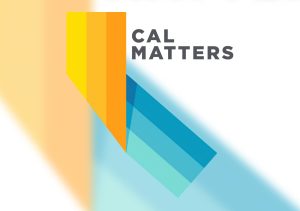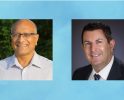Santa Clara students still have a lot of catching up to do.
Pandemic learning loss is still rampant across the country, but Santa Clara Unified School District’s (SCUSD) plan to combat it continues to ramp up.
Being out of the classroom during the pandemic devastated test scores and other measures of student success. Repairing the damage caused by a lapse in classroom learning falls mainly to school districts. Educators at SCUSD are taking the task seriously, rolling out a few more programs this year to bolster efforts from previous years.
Brad Stam, chief academic and innovation officer for SCUSD, said the district is putting a few new programs in place this year as well as taking new steps with existing programs.
Being roughly halfway through its recovery, Stam said the district needs to “stay the course” and not “jump from one fad or trend to another.” Catching kids up requires the district to continue to roll out programs that identify which students need the most attention and give them the resources to succeed academically.
“The students who have been hit hardest by the pandemic and by learning loss are the students who come from families with lower incomes,” Stam said. “Learning loss is not something you fix in a year.”
Local Efforts
SCUSD is not unique in that regard. Many studies and reports show learning loss has most hurt low-incomed students and minority students whose first language is something other than English.
Although schools have made progress, math scores in California still remain a third of a grade level behind 2019 levels, according to the Education Recovery Scorecard, a collaborative research effort between Harvard and Stanford Universities.
The federal government has poured roughly $200 billion into schools in an attempt to staunch learning loss. That money, given largely to local school districts, has helped, according to a study by the National Center for Analysis and Longitudinal Data in Educational Research (CALDER).
But, according to the study’s main author, Dan Goldhaber, that money could have been better spent. Crisis conditions of the pandemic, he wrote, made it difficult to spend that money in “thoughtful and effective ways.”
According to the Education Scorecard Recovery study, districts would need to spend between $9,000 and $13,000 per student to get students back to where they need to be.
With an enrollment of 13,919, SCUSD needs to spend between $125.2 million and $180.9 million to see full learning-loss recovery in math. Recovery for reading would cost nearly double that.
Criticism
Many have challenged whether measuring education in such a way is productive. Just because children forget things, the argument goes, doesn’t mean they won’t recover them.
In an op-ed for “Forbes” in 2020, mathematician John Ewing challenged whether we are viewing learning through the right lens. Testing poorly on a subject does not necessarily mean students have forgotten the material, he writes. They may just need to reassemble the ideas, which often leads to greater understanding.
“Learning is complicated,” Ewing, who was president of Math for America at the time, wrote. “Plutarch famously wrote that minds are not vessels to be filled but fires to be kindled. Fires don’t leak. You don’t measure them in months. Learning loss is a calculation masquerading as a concept — a rather shallow, naïve, ridiculous concept.”
Jo Boaler, a Stanford University professor of mathematics, expressed similar sentiments. In an op-ed of her own, she noted that California closed more schools than any other state yet had some of the smallest declines in math scores.
She points to two other studies that bolster her claims. One, by Stanford’s Education Recovery Scorecard, compared math achievement pre-and-post pandemic. That study concluded that many things — not just learning modes — contributed to a lapse in learning. The second, called the National Speak Up Project, showed that student engagement was roughly the same before and after the pandemic, regardless of their learning method.
“It is inconceivable to me that students simply stopped learning during the pandemic’s lengthy societal upset,” she wrote. “But teachers were heroic during the pandemic, and data shows that students continued to strive toward meaningful learning, even with many forms of chaos erupting all around them.”
Still, others have pushed back, calling for critics to stop repeating the notion that learning loss is a non-issue.
Nathaniel Grossman is a former editorial program associate for Thomas B. Ford Institute. He is now the deputy director at the Center for Education Reform. In a response to Boaler, Grossman writes that Boaler is “egregiously wrong,” calling learning loss a “profound generational problem” educators need to continue addressing.
Staying the Course
Next year will be the second year of SCUSD’s Math Pathways program. The program is a series of compacted, specially tailored, classes that all the students take.
The district also continues to monitor chronically absent students — i.e., students who have more than 10 unexcused absences in a year — because they are at greater risk, Stam said. Especially at lower grades, too many students have forgotten how to “do school,” he said.
“Many students had not developed skills such as sharing, waiting in turn, listening to the teacher,” Stam said. “There was fear and anxiety that came from being in environments that are busy environments, environments with a lot going on.”
Focusing on “social emotional learning” also continues to be a priority. SCUSD’s Positive Behavioral Interventions and Support (PBIS) program — systems of consistent, positive reinforcement with tiered responses — has also moved into middle and high school and will be available all-day-every-day.
Other safety nets go a long way too.
More “redemptive” grading policies allow students more chances to make-up material instead of fostering a defeatist attitude in them, Stam said.
“The goal is mastering the content by the end of the course, not to master it at any point,” he said.
Additions
In addition to continuing many programs it has rolled out over the past few years, SCUSD is also introducing some new programs next year.
Expanded Learning Opportunities, a state-funded after-school program, gives kids access to more learning opportunities. For students who need more one-on-one attention, SCUSD has developed a system of in-person tutoring, employing a network of high school and college students as well as parent volunteers.
A new phonic program will also address language barriers by paying special attention to non-native English speakers.
Block grants will fund important art enrichment, fostering what Stam called a “whole-child approach.” An extensive network of support is doing a lot of heavy lifting to combat learning loss.
“You can’t just hammer kids with reading and math, reading and math. Double doses of things don’t yield the results people think,” Stam said. “If you want to go fast, go alone. If you want to go far, go together. We want to go far.”
A Parent’s Perspective
Aja Sulak’s daughter spent all of her second-grade year learning remotely. Next year, her daughter, Eleni, enters sixth grade at Peterson Middle School. Since she was able to be very involved in her daughter’s education, she counts herself fortunate Eleni didn’t suffer much learning loss.
Because of when the pandemic struck, Sulak said Eleni was well-positioned to recover. While she didn’t suffer much learning loss, Sulak said Eleni was young enough to catch up but not so old that she suffered socially.
“If we had to miss a year and a half, this was the time to do it,” she said. “Socially, I think she came out of it OK. She was young enough that her friends weren’t her whole life … I wasn’t looking for help socializing her.”
Although it didn’t affect her daughter, Sulak said she understands why the district is dividing focus between academics and “social-emotional” support.
“As a parent, they are equally important,” she said. “You can have the smartest kid there, but if they don’t have the emotional support, they could still be a disturbance in the classroom, then you can have the most well-behaved kid who is struggling academically.”
While she is not apprised of many of the district’s high-level plans to combat learning loss, she said she would like there to be a little more communication from the teachers. More trained educators to work with kids one-on-one or in small groups would go a long way too, she added.
She agreed that the discourse around learning loss has gotten a bit stale.
“It seems like after three years, that should be addressed,” she said. “It may not be COVID anymore. I think it is fair to say, maybe look into other things.”
Dollars and Sense
The district’s Local Control and Accountability Plan has solicited input from 1,100 respondents, Stam said. That effort aims to create “cultures of belonging and diversity,” specifically targeting minority students that have been disproportionately hurt by the pandemic.
With those suggestions in hand, a district advisory committee helps craft efforts to staunch learning loss.
“We are not sitting alone in a room cooking up these ideas,” Stam said.
The phonics program will cost roughly $2 million. Although not fully planned out yet, Stam said the tutoring program will cost “in the six figures,” while its Math Pathways will be in the “multi-millions.”
“You can’t do this on the cheap. If you want to have supplemental interventions, it costs money,” Stam said. “There are no dollars better spent.”
Still, parents will likely expect to see a return on their investment. Without a clear idea what the district is spending on these programs compared to the results their kids are getting, the district could end up in hot water.
Just ask the state of California. An Alameda County Court ruling, handed down earlier this year, forces the state to spend $2 billion of remaining federal money on programs for high-needs students. The suit claimed Los Angeles and Oakland schools failed to use federal aid money effectively, and the court agreed.
Whether local parents will see returns to justify the vague amounts the district spends on these programs remains to be seen.












0 comments